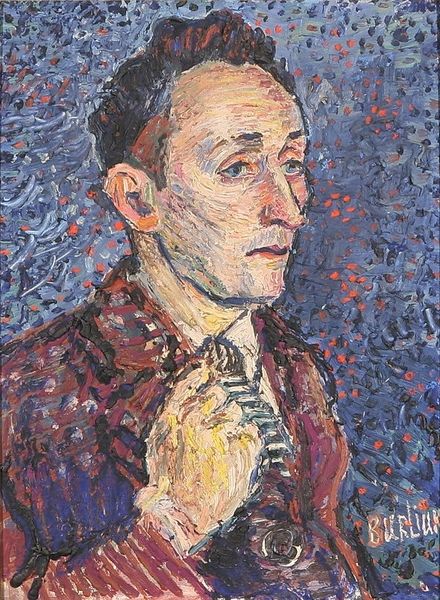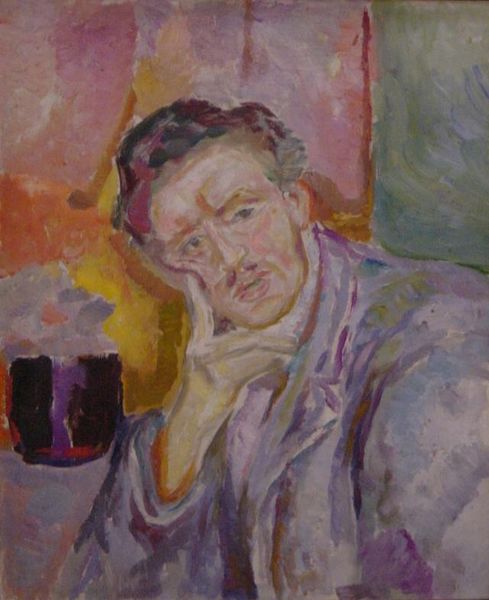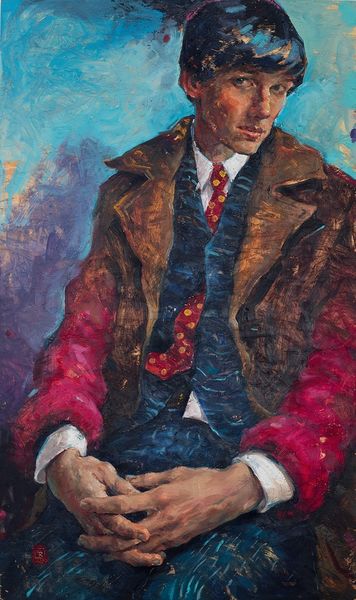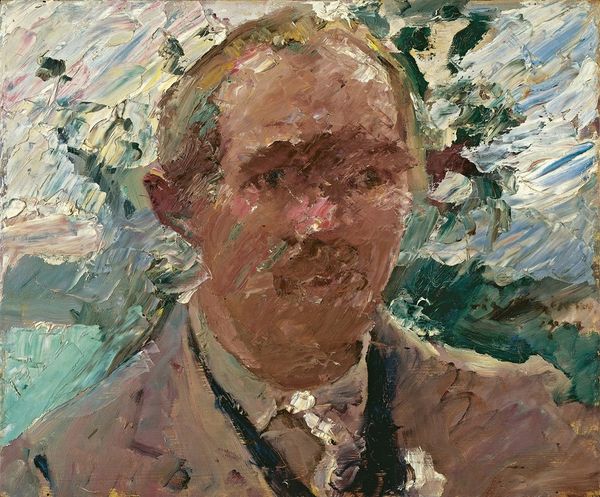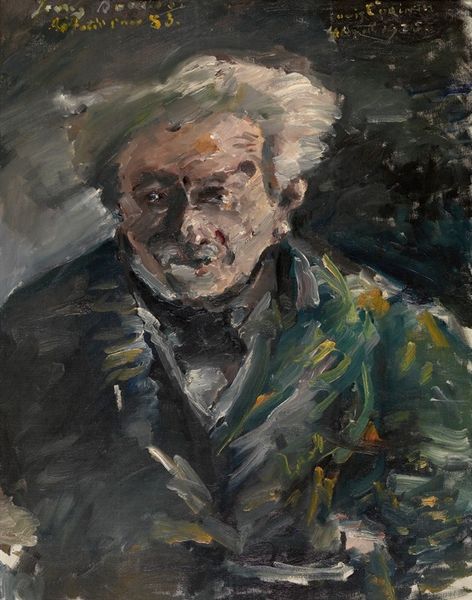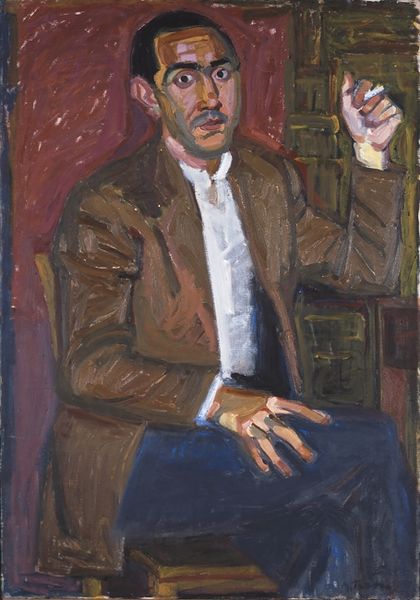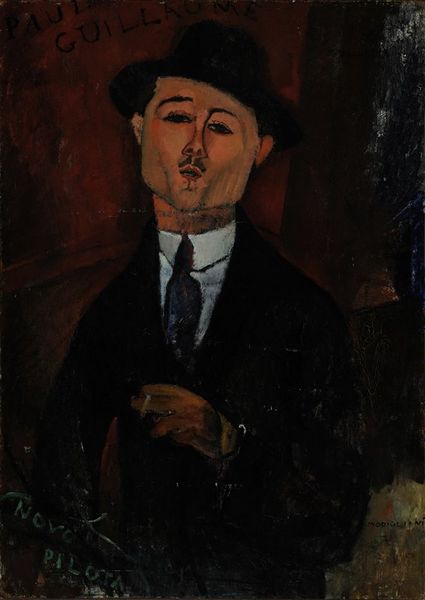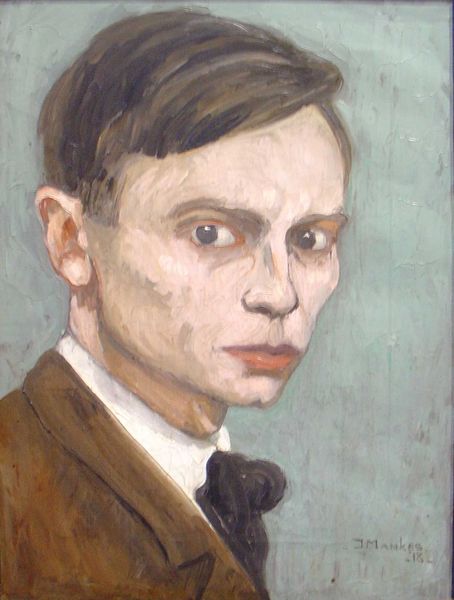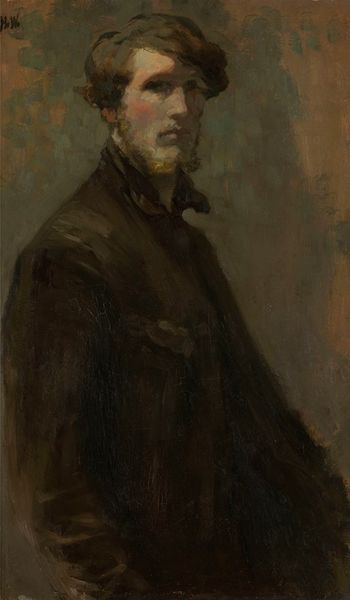
#
abstract expressionism
#
abstract painting
#
canvas painting
#
possibly oil pastel
#
oil painting
#
fluid art
#
acrylic on canvas
#
paint stroke
#
painting painterly
#
expressionist
Copyright: Beauford Delaney,Fair Use
Curator: Welcome, I'm excited to share with you Beauford Delaney’s “Untitled (Portrait of A Gentleman)” from 1945, likely executed in oil on canvas. Editor: My first impression is a tactile darkness—that thickly applied paint builds such an intriguing surface. It gives the piece a sculptural, almost brooding presence. Curator: Indeed, the impasto is central to its effect. Notice how Delaney manipulates light through the varying depths of paint. The planes of the face are sculpted with bold strokes, playing with perception itself. Semiotically, it disrupts conventional portraiture. Editor: What strikes me is how that surface contradicts the supposed refinement of the subject, right? It feels like an indictment of traditional portraiture's glossy ideal, exposing the raw labor involved in representation. Considering Delaney, an African American artist working in 1945, maybe that defiance is deliberate. Curator: An interesting perspective, certainly. Although one could also interpret it as Delaney pushing the boundaries of form in the vein of Expressionism. He employs color, line and texture not for mimetic representation, but as an articulation of interior states. The abstract is key to his pursuit. Editor: Yet, one can’t overlook the material conditions shaping that ‘interior state.’ Delaney used inexpensive materials sometimes—salvaged canvases, house paint. It wasn't always about high-minded ideals, it was also about what was available to him given racial and economic constraints. The painting’s material reality mirrors a lived experience of restriction. Curator: But wouldn't you concede that Delaney transforms any constraint into an opportunity for formal experimentation? The thickness of the paint allows for a certain luminescence, an inner radiance even in those darker areas. This echoes his broader artistic explorations with light. Editor: Maybe. But I see it as a visual echo of resilience born from making-do. The dark, layered surface mirrors the accumulation of experiences faced by many marginalized individuals. This isn't merely aesthetic; it's material and lived, built into the artwork's very skin. Curator: I appreciate you pushing me to think beyond the solely formal qualities, to see how they connect with biographical details and societal forces. Editor: And you remind me of how, even with all those contextual considerations, that the painting really invites viewers to interpret its meaning. Curator: Let's move along to our next work.
Comments
No comments
Be the first to comment and join the conversation on the ultimate creative platform.

